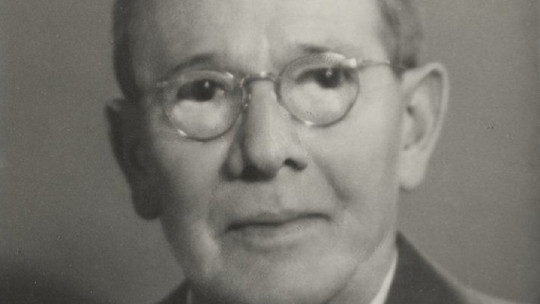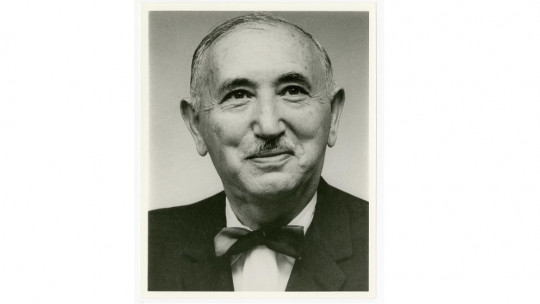Nowadays most of us know that it is an intelligence test. Used in the clinical, school and working world, thanks to them we can have an approximate measure of each person’s intellectual capacity, which allows, for example, to adjust education and training to the specific individual needs of those subjects with a level well above or below the average.
However, intelligence tests have not always been there, being in fact a relatively recent invention. The first of all of them was created by Alfred Binet ; Below we will briefly review his biography.
Biography of Alfred Binet
With a doctor father and a painter mother, Alfred Binet was born in Nice on July 8, 1857
His parents would soon separate, moving with his mother to Paris. There she continued her education at the Lycée Louis-le-Grand, where she would finish high school. Once these studies were completed, as Piaget would do some time later, Alfred Binet would decide to study law at the Sorbonne. However, he would end up developing a certain interest in psychology, in which he would begin to teach himself.
In 1884, Binet married the daughter of embryologist Edouard-Gérard Balbiani, who encouraged him to study natural sciences, and he would later be encouraged by Ribot to continue his studies in psychology.
Home and research in the psychological area
Attracted by psychological work on hypnosis and suggestion, topics of great interest at the time, would end up working together with Charcot at the Salpêtrière in aspects such as hypnosis, transference and perceptual polarization. He remained in that hospital until 1891, when he was forced to publicly acknowledge as his own a series of methodological errors committed by Charcot as research director during research with supposedly hypnotized subjects. After that he would leave the Salpetriere and his hitherto mentor, as well as the research on hypnosis and suggestion.
The birth (in 1885 and 1888) and growth of his daughters would help him focus on other aspects of psychology, greatly contributing to his focusing his research on evolutionary development. He would make a large number of observations regarding his growth, which would lead him to develop a concept of intelligence and even begin to develop foundations for the emergence of differential psychology.
Over time He helped found the first psychological research laboratory in his country in 1889. He would become director of said laboratory, holding the position until his death.
During the year 1892, the psychiatrist Théodore Simon would contact him, who would eventually collaborate with him in the creation of the first intelligence scale. Binet would tutor his doctoral thesis regarding children with intellectual disabilities.
In addition, in 1895 Binet created the first French psychology journal, l’Année Psychologique.
Measuring intelligence
At that time, the French government declared compulsory schooling for all children between six and fourteen years of age. However, the sudden emergence of said law caused a great deal of difference in the baseline level of knowledge and skills of students so the administration decided that it was necessary to be able to classify students who had great difficulties in pursuing a formal education.
To this end, the French government organized a commission that would scientifically study how to identify those individuals with difficulties in following an ordinary education, as well as the way in which they could be educated and the measures that should be taken with them. Binet would be part of said commission, which ended up dictating that it was necessary to establish a method to identify students with educational and/or intellectual delays. The need to separate these students from ordinary classes would also be determined, giving rise to special education.
Although in order to classify the abilities of the students it was necessary to use some type of mechanism or instrument, at that time the only existing psychic measurements They were based on Galton’s biometric method , which obtained data from the measurement of physical and physiological attributes. However, intelligence is a construct that could not be measured in the same way, so Binet would be asked to develop some type of instrument for this purpose.
The Binet-Simon scale
With the help of Simon, Binet would develop the first intelligence measurement scale in 1905, the Binet-Simon scale. This scale would use an executive type criterion in which children had to use their abilities to solve certain tasks. These tests ranged from the most sensory to more abstract tests that forced the use of intellectual capacity. An attempt is made to measure what both Binet and Simon understood as a fundamental factor of intelligence, practical judgment or common sense (based on the ability to understand, judge and reason correctly).
A total of thirty tasks were developed, especially linked to the verbal aspect and problem solving. The main objective was to be able to distinguish those children between three and thirteen years old who had difficulties to follow a normative education in order to be able to offer them reinforcement. The age of the subject was taken into account, with the difficulty and level of abstraction of the tests increasing with age. A precise measurement of intellectual level was not intended, so in its original version this scale does not include a precise scoring method.
This would change in 1908, when Binet would carry out a revision of said scale in which he would include the concept of mental age, understood as the age at which the majority of people considered normative are capable of solving the same number of problems. This allowed us to establish whether there were more or less significant delays as well as a better classification of individuals.
Alfred Binet was contrary to the idea that intellectual capacities were unchangeable , raising the need for those children with below-average abilities to take special training courses in order to increase them. He considered that the environment had a fundamental importance in the development of abilities, not believing that differences in intelligence were due solely to biological causes.
This scale was quickly popularized due to the need for it and its ease of application. Binet would continue to make improvements to it, but shortly after the third revision was published he died due to a stroke in 1911.
Binet’s legacy in Psychology
After his death and even before it, many other authors were interested in the scale created in collaboration with Simon. One year before his death Goddard would translate this scale into English and try to bring it to the United States although the presence of significant differences between the French and American populations caused methodological difficulties.
Shortly after, in 1912, Stern would work on the results obtained from the scale and would emphasize that the presence of specific delays at different ages has a more relevant meaning and implies greater or lesser alteration at a certain age, creating the concept of Intelligence Quotient. .
Aware of the difficulties of application due to population differences and knowledge of the concepts that other authors such as Stern developed, Terman would carry out a review of the Binet scale, which would be called the Stanford-Binet scale This scale would include the measurement of the Stern Intelligence Quotient, multiplying it by one hundred in order to eliminate fractions. He would therefore create the IQ that is known today, allowing a more precise measurement of the level of intelligence.
The Stanford-Binet scale would be the main intelligence test for decades, until be advantaged by the birth of the Weschler scales
In conclusion, Alfred Binet’s contributions to psychology have been of great importance, his works being inspiration for many other authors such as Weschler or Piaget. However, his work has been used on many occasions to separate, label and disaggregate children with intellectual difficulties, his scale being applied with a purpose opposite to that intended by the author (to reinforce and help children with difficulties).
Other contributions
Although Alfred Binet is mainly known for being the creator of the first intelligence test, his work was not exclusively focused on this aspect.
For example, Binet worked on the definition of what we consider fetishism today , understanding it as the product of the memory of a sexual excitement that appeared during childhood, the fetish object being the elicitor of said memory. Likewise, I would also propose a differentiation between a small fetish and a large fetish, with paraphilic behavior being typical of the latter.
He also made various contributions during his time at the Salpêtrière, such as various studies regarding hypnosis and suggestibility, or other contributions such as some referring to the study of personality.
Other works of interest include several studies on visual memory and intelligence , which would be carried out based on the game of chess. Although initially it was proposed that the good player had a high visual memory and this meant that he was able to play correctly, the conclusions of the study showed that creativity and experience were also necessary.
Finally, his work regarding graphology is also known, or how a person’s way of writing can provide us with information about their way of being and perceiving.









